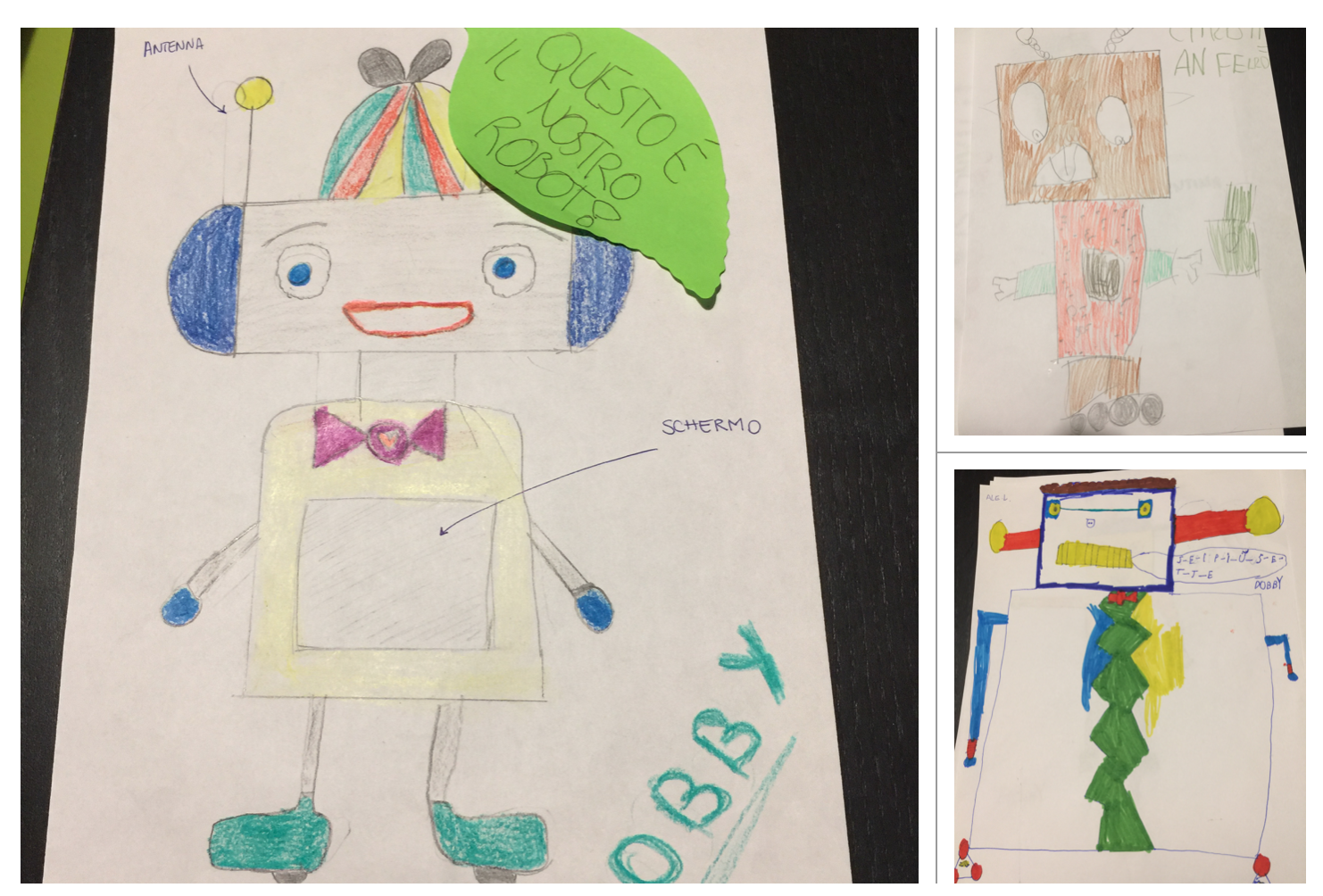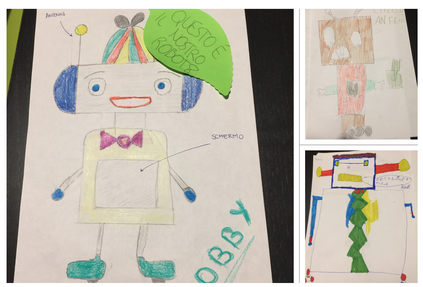During the 2017-18 academic year we carried out a series of coding activities, lasting about 3 months, in a third of the Giulia Falletti primary school in Barolo in Turin (Gena et a., 2020). These activities aimed to teach students not only the basics of programming, but also to introduce a new language and a new way of thinking and solving problems: computational thinking. The class consisted of 25 pupils: 14 males and 11 females, which we then operationally divided into two working groups (13 + 12) to make coding lessons more manageable and provide better childcare. The lessons lasted one hour and were conducted, in the presence of one of the teachers, by a computer teacher assisted by a student / facilitator. At the end of the three months of this positive experience, we realized that having an educational robot that can perform the same kind of actions that virtual robots do, like those of code.org, is very useful for children, especially to help them to solve orientation problems. Therefore, since no commercial robot had the characteristics we wanted, we decided to create an educational robot from scratch, equipped with social, interactive and emotional skills, able to involve children and establish an emotional bond with them in order to increase their learning and involvement. We decided from the beginning to design the robot as an open source project, made at a low cost, proposing a kit that can be easily reproduced and improved by anyone who wishes.
翻译:在2017-18学年,我们在都灵的巴罗罗(Gena等人,2020年)的三分之一的朱利亚·法雷蒂小学(Gena等人,2020年)中开展了一系列为期大约3个月的编码活动,这些活动旨在不仅教育学生,而且引入一种新的语言和新的思维方式,解决问题:计算思维。该班由25名学生组成:14名男生和11名女生,我们随后将其分为两个工作组(13+12),以便更便于管理并更好地提供儿童保育。课程持续了一个小时,并由一名教师在场,由一名计算机教师在学生/调解人的协助下进行。在三个月的积极经验结束时,我们认识到拥有一个教育机器人,能够像虚拟机器人那样,采取类似代码.org的类似行动,对儿童非常有用,特别是帮助他们解决定向问题。因此,由于没有任何商业机器人具备我们想要的特点,我们决定从零开始创建一个教育机器人,配备社会、互动和情感技能,并由一名计算机教师在学生/调解人的协助下进行教学。在这个积极经验的三个月结束时,我们认识到拥有一个教育机器人,能够像虚拟机器人一样,以开放的方式,从儿童开始,建立一种情感纽带,从一个我们决定从一个可以轻松地学习,从一个学习到一个小的版本,从他们,从一个可以选择一个好的学习到一个设计,从一个好的学习到一个开放的软件,从而建立一个可以增加一个好的机器人,从而增加一个可以选择一个可以选择一个情感联系。





